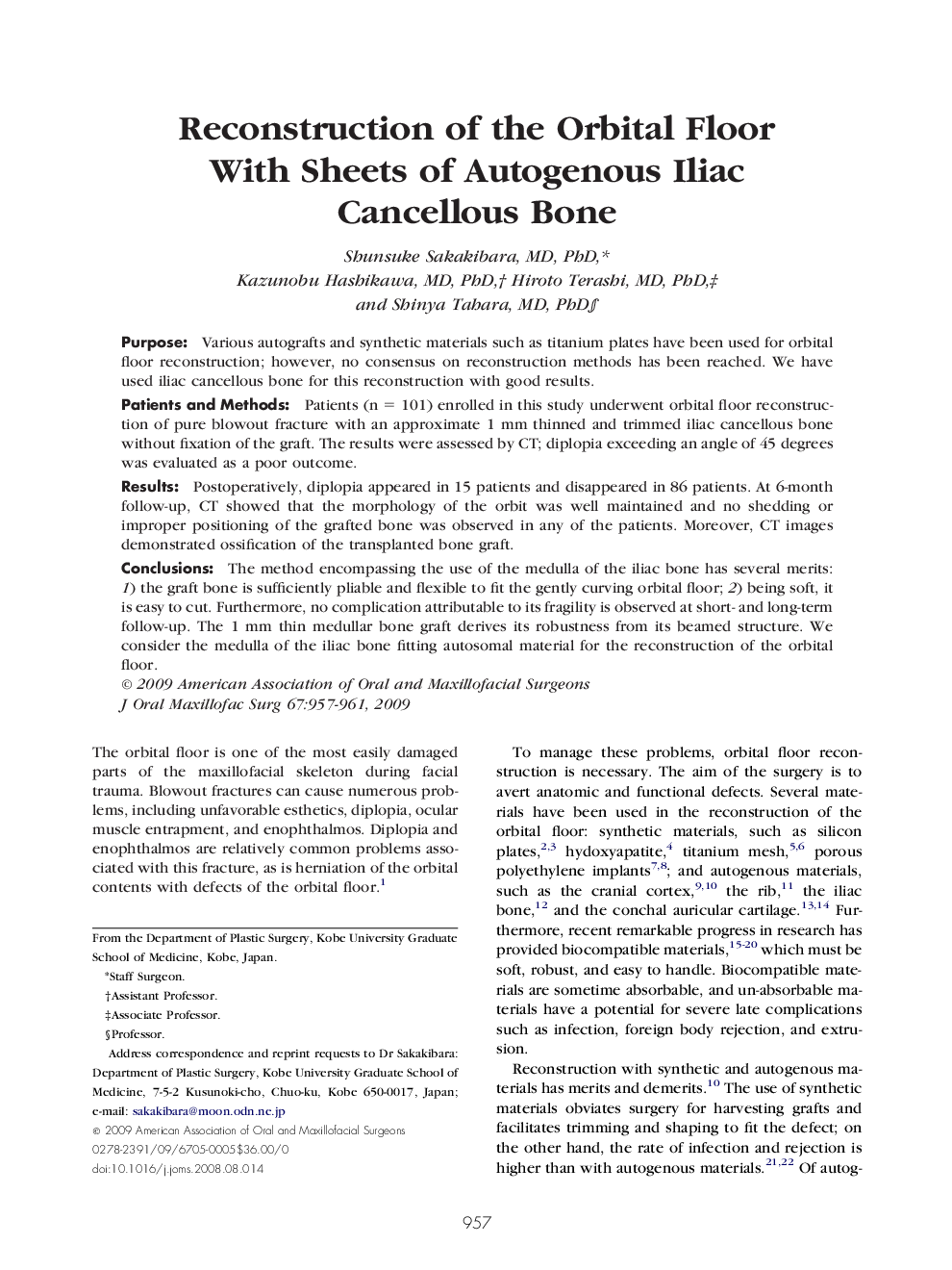| Article ID | Journal | Published Year | Pages | File Type |
|---|---|---|---|---|
| 3154179 | Journal of Oral and Maxillofacial Surgery | 2009 | 5 Pages |
PurposeVarious autografts and synthetic materials such as titanium plates have been used for orbital floor reconstruction; however, no consensus on reconstruction methods has been reached. We have used iliac cancellous bone for this reconstruction with good results.Patients and MethodsPatients (n = 101) enrolled in this study underwent orbital floor reconstruction of pure blowout fracture with an approximate 1 mm thinned and trimmed iliac cancellous bone without fixation of the graft. The results were assessed by CT; diplopia exceeding an angle of 45 degrees was evaluated as a poor outcome.ResultsPostoperatively, diplopia appeared in 15 patients and disappeared in 86 patients. At 6-month follow-up, CT showed that the morphology of the orbit was well maintained and no shedding or improper positioning of the grafted bone was observed in any of the patients. Moreover, CT images demonstrated ossification of the transplanted bone graft.ConclusionsThe method encompassing the use of the medulla of the iliac bone has several merits: 1) the graft bone is sufficiently pliable and flexible to fit the gently curving orbital floor; 2) being soft, it is easy to cut. Furthermore, no complication attributable to its fragility is observed at short- and long-term follow-up. The 1 mm thin medullar bone graft derives its robustness from its beamed structure. We consider the medulla of the iliac bone fitting autosomal material for the reconstruction of the orbital floor.
